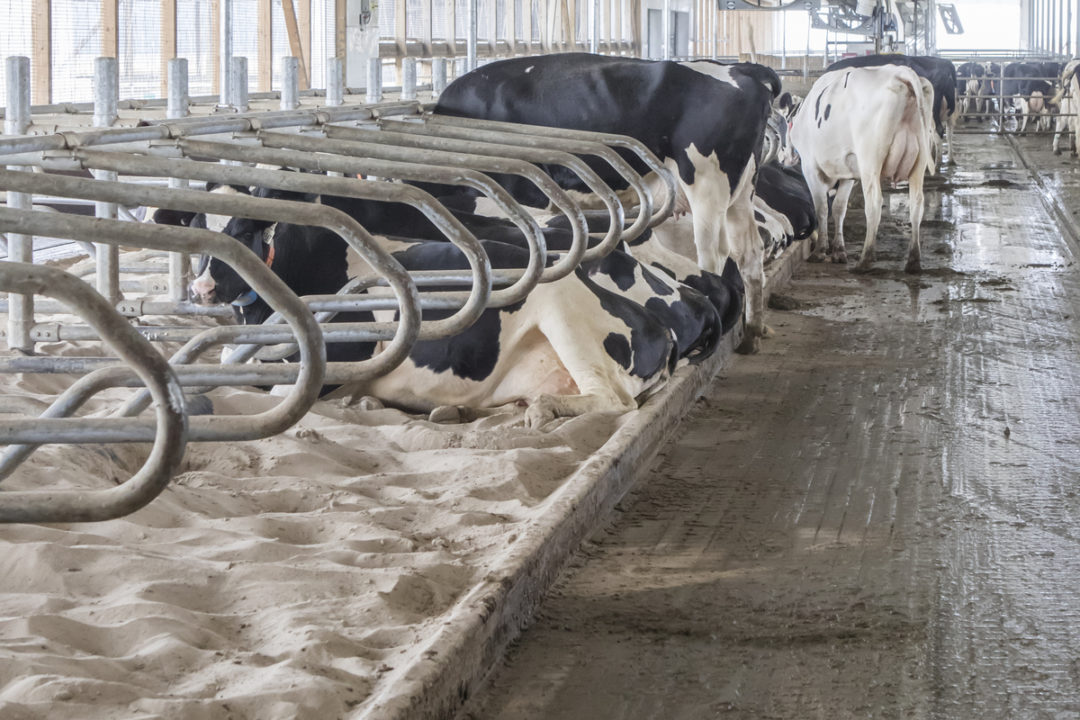Turning off the milk pump one last time creates deafening silence. A parlor without the familiar hum was not a decision made lightly for the business. Let’s highlight that word: business.
The livelihood change of selling a dairy can become a heartbreaking lifestyle disruption. Yet, whether the sale is due to finances or succession plan absence, the transaction needs to be approached with a business mindset. It is the operation’s last and largest paycheck.
Do not treat your lifetime investment in the dairy like anything less.
Management missteps can deteriorate value, especially in 2023. Today’s expanding dairies, your buyers, have high standards for data integrity and performance potential. If they are adding herd replacements, they want purchases to be competitive with their current herd and have a quick return on investment.
Proactively strategize with your dairy’s key stakeholders to maximize cattle marketability in case the time comes to sell the cows.
1. Don't cut groceries
If you cannot afford to feed them, you cannot afford not to feed them.
When milk prices are low and margins tight, it is tempting to stint on heifer nutrition, the non-income-earning population. But don’t put your heifers on the discount rack before they are even for sale.
Regardless of market conditions, healthy, well-grown heifers always command the highest prices. Buyers want consistent-sized replacements that can walk into their age-grouped breeding pens, close-up cohorts and, ultimately, the fresh pens without missing a beat.
Cows are sometimes well into their second lactation before becoming cash flow-positive pending inputs and output. Unthrifty heifers, with reduced first-lactation performance, will take longer to repay purchase and raising costs. The money saved on the front end by cutting heifer feed costs can create a rap sheet of extra expenses including long days-on-feed-to-freshening, metabolic disorders in the transition period and higher days open.
2. Don't skip good genetics
Dairy cattle performance is a combination of environment and genetics. Yet, if you have plans to close the parlor in the next few years, it can be tempting to let genetic selection intensity slip and save some money with cheap semen. Don’t fall into that trap.
Genetics are permanent and cumulative. Sires picked today will be built upon for generations. Maintaining a strong standard of genetics in your herd is one of the most economical ways to maintain future cattle value.
Many buyers are willing to invest more in herd additions if cattle rank well on industry-standard indices, such as Net Merit Dollars (NM$). Genomic evaluations or parent averages in herds with good record-keeping can be used.
Semen costs have a high return on investment if genetics have relevant income-earning traits. The slightly higher cost-per-pregnancy is minimal compared to the impact genetics can have on performance and cattle marketability.
Incorporate genetics into your breeding program that create healthier cows with reduced expenses or traits with increased productivity. Review herd genetic trends annually with a genetic audit to ensure you are maintaining expected progress.
Genomic testing can add a premium to your heifer prices. But be realistic about the group’s ranking relative to the industry average. If you are only selling your bottom-ranking excess heifers, don’t expect buyers to be interested in paying more for the tested heifers unless your low genetics rank competitively with their existing herd.
3. Don't crossbreed without a plan
If you are considering a dairy crossbreeding plan as a “last ditch effort” to widen margins, first consider resale value impact.
Crossbred cattle are generally not as consistent as purebreds. Consistency adds value. Whether a two-way or three-way cross, buyers expect a level of inconsistency in a crossbred group without even laying eyes on the cattle and discount accordingly.
The more limited buyer pool reduces marketability. Buyers who are interested in or have facilities to milk crossbred cattle are not as frequent.
Alternatively, if done correctly, a terminal beef-on-dairy cross pregnancy has potential to add value in today’s market with the promise of extra cash flow for buyers. The beef breed needs to be designated for use on your dairy cattle breed. Do not use generic beef sires. The wrong beef bull can introduce calving problems for your buyer and depreciate value along the supply chain, from day old to harvest.
Avoid blanket breeding heifers to beef semen if you are planning to sell your heifer program. Beef sires, unless designated for use on dairy heifers, can throw calves with boxy shoulders, creating calving problems, as well as the domino effect of transition and first-lactation re-breeding problems. Typically, the most marketable service sire for heifers is sexed semen.
4. Don't fire your secretary before the cows leave
Quality data speaks loudly to potential buyers.
The more clean and accurate data you have available, the more valuable the cattle can be. Do not neglect health event recording, breeding event recording, milk testing, genomic testing or overall data management in the final few months just because you "think you will be selling the cows soon." The data matters more than ever.
One of the first data points whole-herd buyers look at is average days in milk. If you have been selling groups of fresh cows in advance of your dispersal, do not expect a premium price on the remaining stale group. However, if you are looking for extra cash flow, don’t sleep on current beef prices. Use this as an opportunity to cull blemished cows that need a career change.
Choosing your next move
Strategically planning a sale, instead of being forced to sell due to a financial dead end, allows you time to evaluate market conditions and options. The more flexibility your financial situation offers, the more opportunity you have to capture top dollar for your cattle. This could include waiting out a market downturn or selling off cattle in groups at a time instead of all at once.
Consult with people who know the dairy and beef markets for a smooth, intentional and ultimately more profitable exit. This includes weighing the pros and cons of a public auction versus private sale.
A public auction puts you at the mercy of daily market fluctuations, for better or worse. When the cattle market is hot, this can be very lucrative despite the likelihood of more out-of-seller-pocket fees and a generally higher commission.
Private sales provide more assurance cattle will be sold at a mutually agreeable price. Often, this reduces the number of buyers, saving the headache of extra health testing and shipping to multiple locations.
This economy’s margins are giving one of the tightest squeezes we have seen in decades. Yet, we know this industry has peaks and valleys. If you can wait out the current milk prices, cattle prices trend upwards when milk prices do. However, there may be a point where cutting losses now will outweigh waiting for the next peak. Getting too far in the red is when cost-saving management adjustments quickly deteriorate cattle value.







